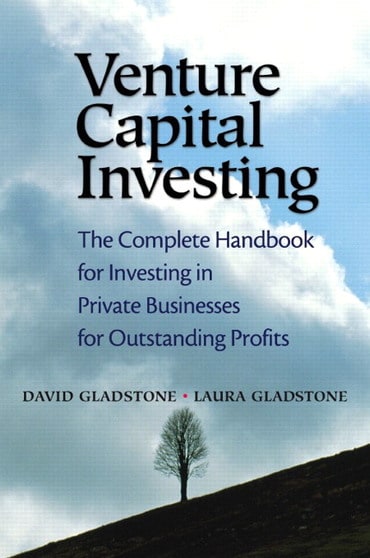
Venture Capital Investing: The Complete Handbook for Investing in Private Businesses for Outstanding Profits, 1st edition
Published by FT Press (August 13, 2003) © 2004
- David Gladstone McLean, Virginia
- Laura Gladstone McLean, Virginia
- A print text (hardcover or paperback)
- Free shipping
- Also available for purchase as an ebook from all major ebook resellers, including InformIT.com
In his classic bestseller Venture Capital Handbook, leading venture capitalist David Gladstone showed thousands of companies how to get funding and work with early stage investors. Now, in his revision of the classic, Venture Capital Investing, he looks at venture capital through the eyes of the investor. Gladstone shows all of you VC investors and angels exactly how to weed through scores of business proposals and find the gem that will deliver outstanding returns, especially in these soft economic times. You will learn what to look for in a business proposition; how to assess entrepreneurs and their management teams; how to evaluate financial statements, market niches, competitive environments, and product innovations; how to investigate a business that's already operating; and how to build effective partnerships with existing portfolio companies.
Introduction.
1. Keys to Successful Investing.
2. Analysis of Management.
3. Reviewing Personnel and Compensation.
4. Analysis of Marketing and Sales.
5. Investigating Production.
6. Analysis of the Financial Statements and Projections.
7. Reference Information.
8. Negotiating the Deal and Commitment Letter.
9. The Legal Closing.
10. Monitoring the Investment.
11. The Exit.
12. Finding Good Investments.
Appendix A: Questions Used in Venture Capital Investigations.
Appendix B: Actual Documents.
Appendix C: List of Traits for Analysis of People.
Appendix D: Evaluation of an Entrepreneur by an Industrial Psychologist.
Index.
DAVID GLADSTONE founded Gladstone Capital and serves as its CEO and Chairman. He previously served as Chairman of American Capital Strategies, the largest public-traded leveraged buyout fund, and was past Chairman of Allied Capital, the largest public-traded mezzanine debt fund. With Laura Gladstone he wrote the classic book on obtaining financing for small- and medium-sized businesses, Venture Capital Handbook: An Entrepreneur's Guide to Raising Venture Capital. David Gladstone holds an MBA from Harvard Business School.
LAURA GLADSTONE is a Principal of Gladstone Capital. Before joining the firm, she worked in equity research at ING Barings and Salomon Smith Barney, and she was a Syndication Lender at HSBC. She has also served as Marketing Director for Allied Capital Corporation.
Need help? Get in touch
 Play
Play
Pearson eTextbook: What’s on the inside just might surprise you
They say you can’t judge a book by its cover. It’s the same with your students. Meet each one right where they are with an engaging, interactive, personalized learning experience that goes beyond the textbook to fit any schedule, any budget, and any lifestyle.